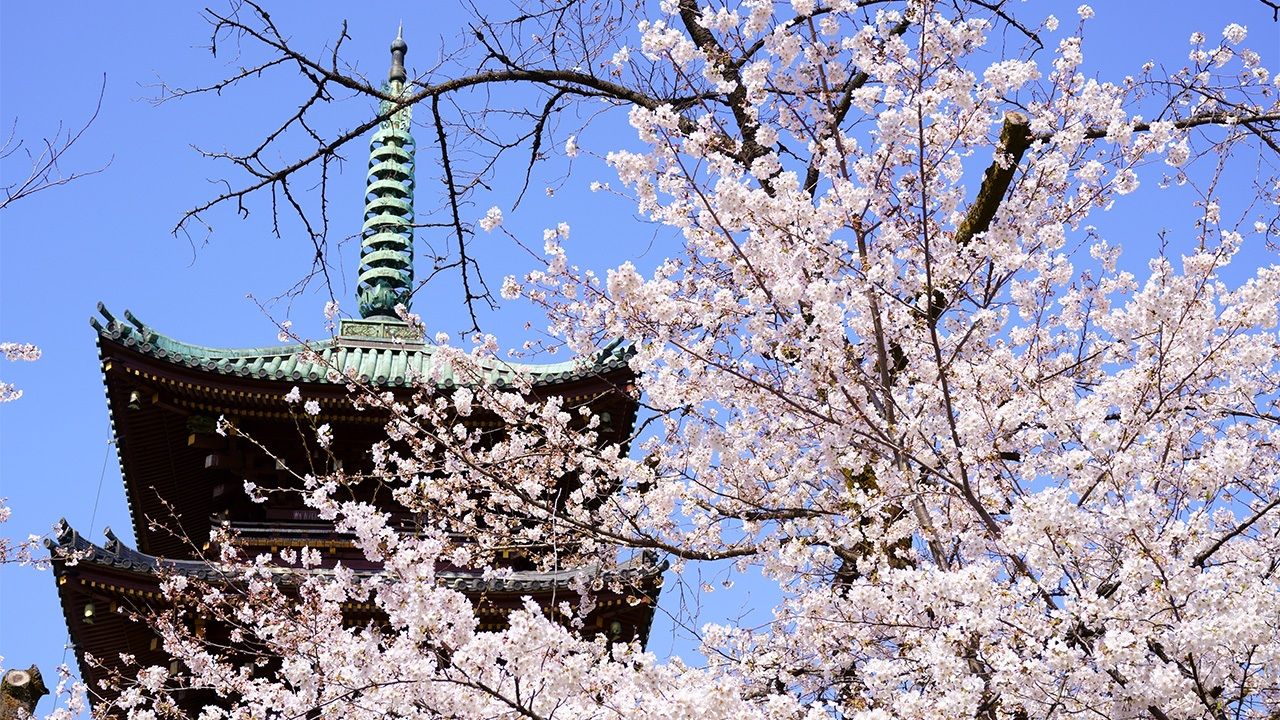
A Journey Through Japanese Haiku
Edo in the Spring
Culture Environment Lifestyle- English
- 日本語
- 简体字
- 繁體字
- Français
- Español
- العربية
- Русский
花のくもかねはうへのか浅くさか 芭蕉
Hana no kumo / kane wa Ueno ka / Asakusa ka
Cloud of blossoms—
the bell at Ueno
or Asakusa?(Poem by Bashō, written in 1687.)
The poet sees a cloud of flowers, and then hears a temple bell sounding. But is it the bell at Kan’eiji in Ueno or the one at Sensōji in Asakusa? It goes without saying that the “blossoms” are cherry blossoms, which have a long tradition of being compared to a cloud when in full bloom. Both Ueno and Asakusa, which are around two kilometers apart, are famous for their cherry trees. From a little way off in Nihonbashi, the center of Edo (now Tokyo), their clouds of blossoms might seem to merge into one. At the same time, a person enjoying the scene may not find it easy to identify the direction the clamor of a ringing bell comes from. The senses of vision and hearing seem to melt in this supple poem of praise to Edo in spring.
As a haiku sure to win the applause of Edoites, Bashō often copied the verse on kaishi, a special kind of paper for poetry, and presented it to others, as well as including it in several books. Two unusual examples of kaishi written by Bashō are still extant. In these, he wrote the haiku as the foreword to lyrics from a yōkyoku or song from nō drama, together with musical notation. The song was “Saigyōzakura,” an ode to the beauty of Kyoto with cherries in full bloom.
Burning with a sense of rivalry toward Kyoto, Bashō extolled the splendor of Edo blossoms. Music was also essential to hanami parties for viewing the flowers. One imagines the hanami revelers at Ueno and Asakusa singing “Saigyōzakura” and cavorting around, like the attendees at a raucous party today.
(Originally published in Japanese. Banner photo © Pixta.)
literature haiku Matsuo Bashō Japanese language and literature